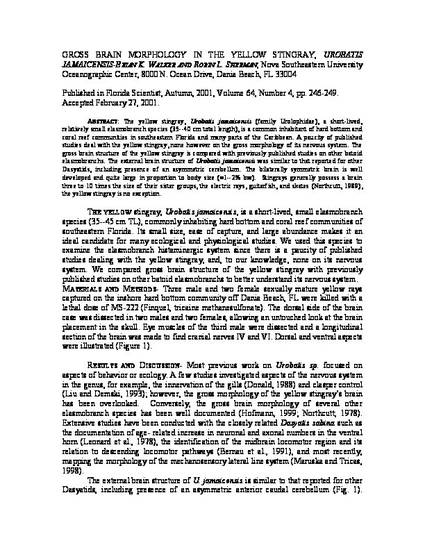
The yellow stingray, Urobatis jamaicensis (family Urolophidae), a short-lived, relatively small elasmobranch species (35--40 cm total length), is a common inhabitant of hard bottom and coral reef communities in southeastern Florida and many parts of the Caribbean. A paucity of published studies deal with the yellow stingray, none however on the gross morphology of its nervous system. The gross brain structure of the yellow stingray is compared with previously published studies on other batoid elasmobranchs. The external brain structure of Urobatis jamaicensis was similar to that reported for other Dasyatids, including presence of an asymmetric cerebellum. The bilaterally symmetric brain is well developed and quite large in proportion to body size (≈1--2% bw). Stingrays generally possess a brain three to 10 times the size of their sister groups, the electric rays, guitarfish, and skates (Northcutt, 1989), the yellow stingray is no exception.
Available at: http://works.bepress.com/brian_k_walker/41/

©Florida Academy of Sciences. 2001